Continuing our Flower Power series…..Juniper
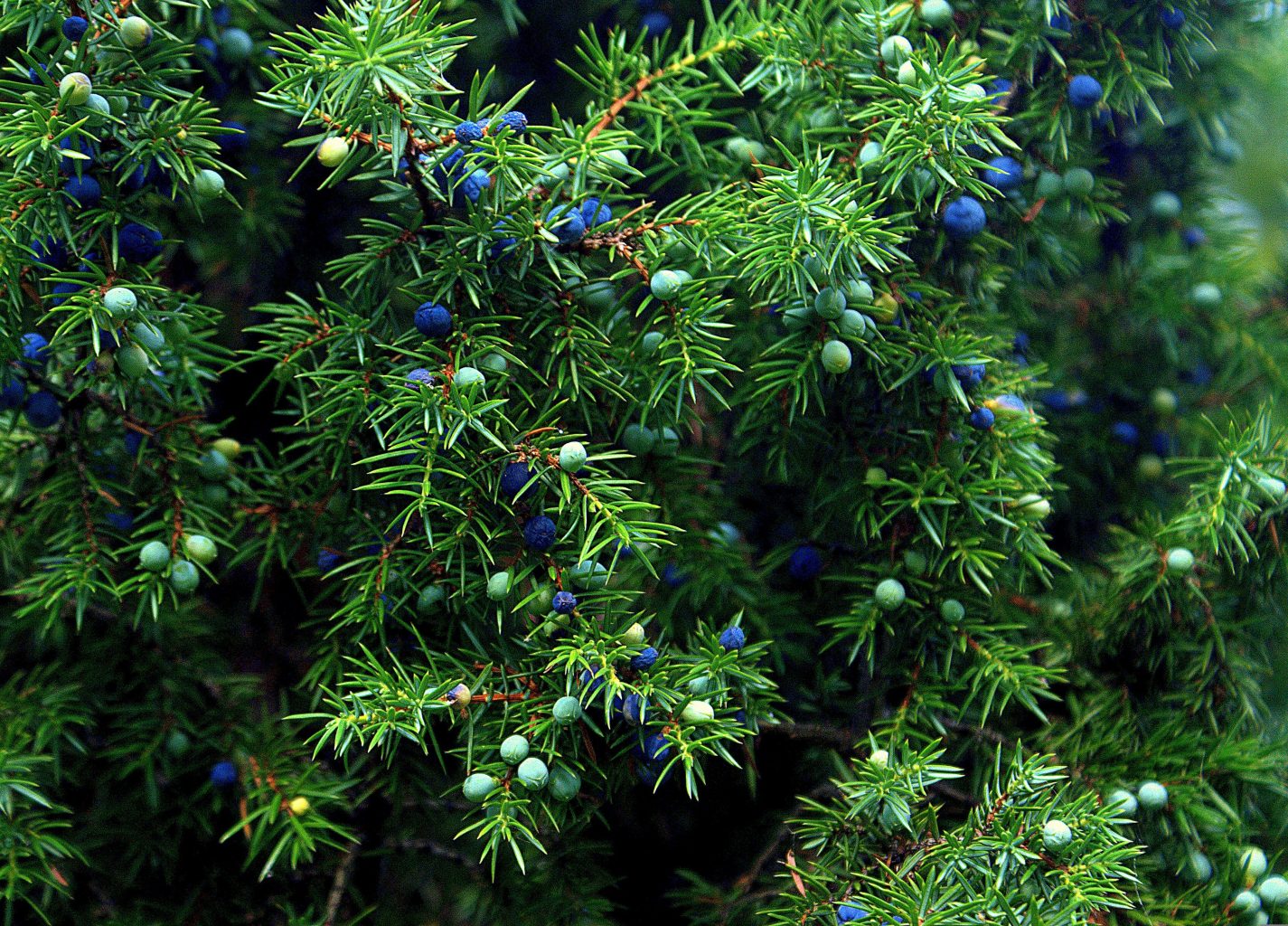
Junipers are aromatic shrubs and trees of the genus Juniperus within the cypress family Cupressaceae. With 60 – 70 species distributed throughout the world, they are most common to the Northern Hemisphere but can also be found in Central America and Africa. An amazing juniper forest exists in the northern Himalayas of Tibet which forms one of the highest tree lines on earth at 16,100 feet.
Junipers can vary from shrubs which creep along the ground to low shrubs with a rounded shape. Others grow vertically into trees that can reach 65–130 feet. All junipers are evergreen with either flat, scaly leaves or needles. Sometimes the leaves start out as needles and then mature into scaly structures.
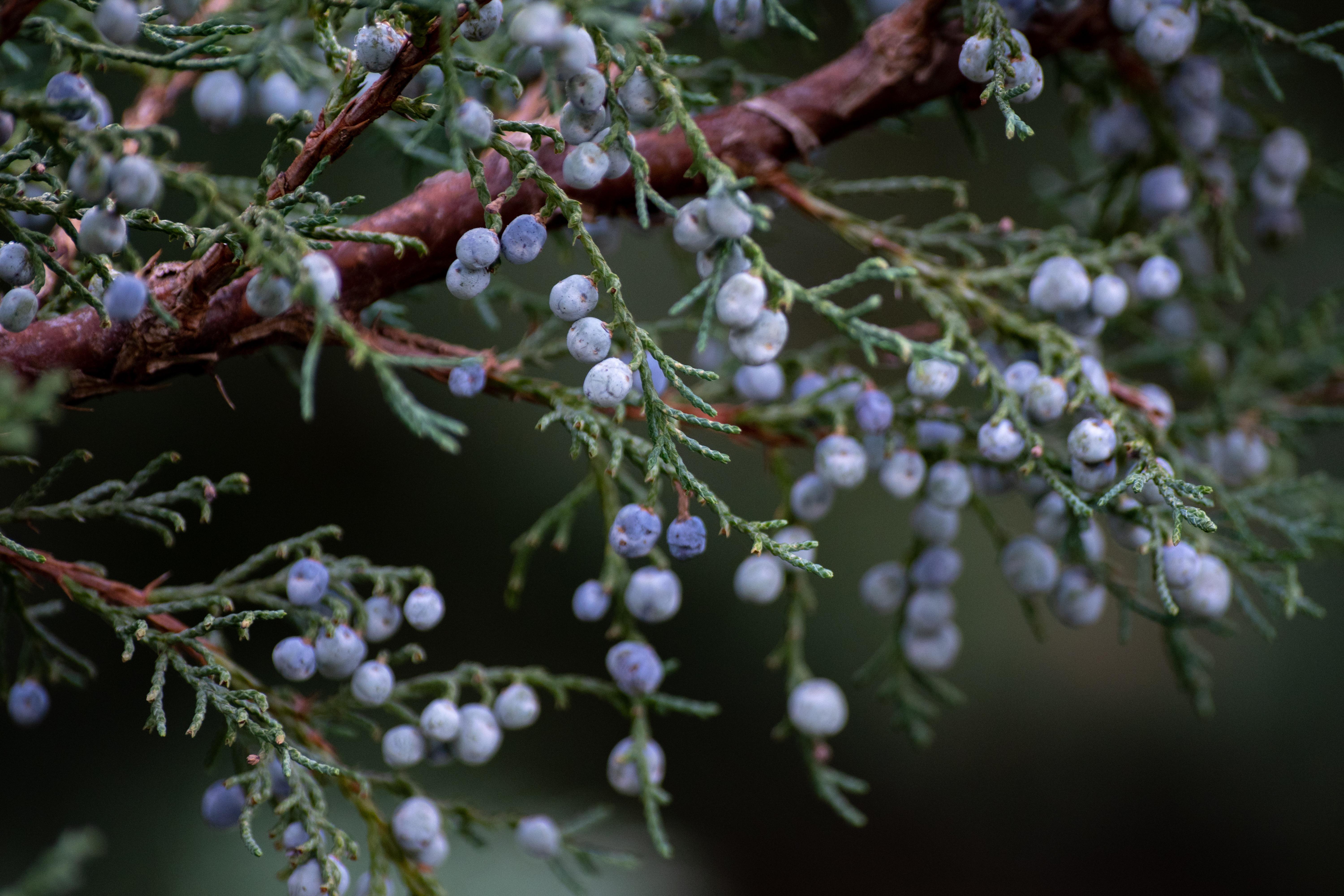
Junipers are conifers and that means their reproductive structure produce cones rather than flowers. The word conifer literally means “cone-bearer”. So, the juniper berry is not actually a berry, it is a cone. Most cones have separated, woody scales but juniper berry scales are fleshy and merged. While providing a unified covering for the seeds, it also gives them the appearance of a berry. The coat of the seed is impermeable for protection and keeps water from getting in.
Except for pine nuts, these fruit-like cones are the only regular type of food that comes from conifer trees. Most, but not all, species of juniper are safe for consumption (with exceptions such as pregnancy or allergies) and some are considered too bitter to eat. A well-known use of the berries has been in flavoring gin. In the 19th century people in Scotland gathered bags of berries for export to Dutch gin distillers and in medieval times they were even used to flavor whiskey.
Juniper berries are most often used as a flavoring for meats, game and sausages. They can be crushed and ground for use similar to peppercorns or pressed for juices. The Romans used juniper berries as a less expensive substitute for black pepper from India. Today, in northern Europe, especially in Scandinavian cuisine, they are said to add a sharp, clear flavor while others claim the taste is bitter and spicy.
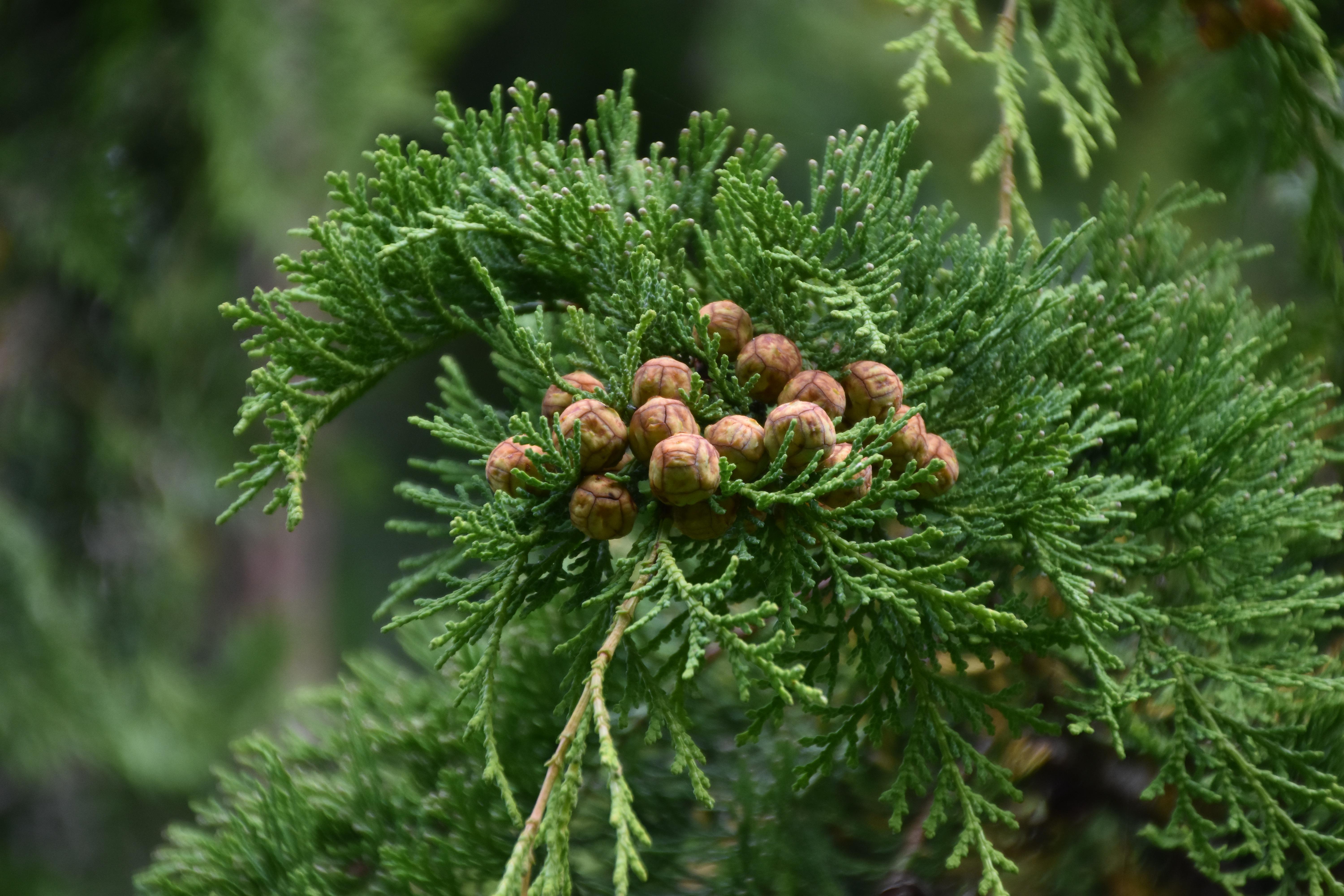
In some species of the female trees, the mature “berries” are red-brown or orange, but in most they are blue. The maturation time of the seed can vary from 6 to 18 months after pollination. As previously stated, it is only the female tree that has the colored berries, the male trees have little brown cones (pictured above) with 6 – 20 scales, very similar to other Cupressaceae.
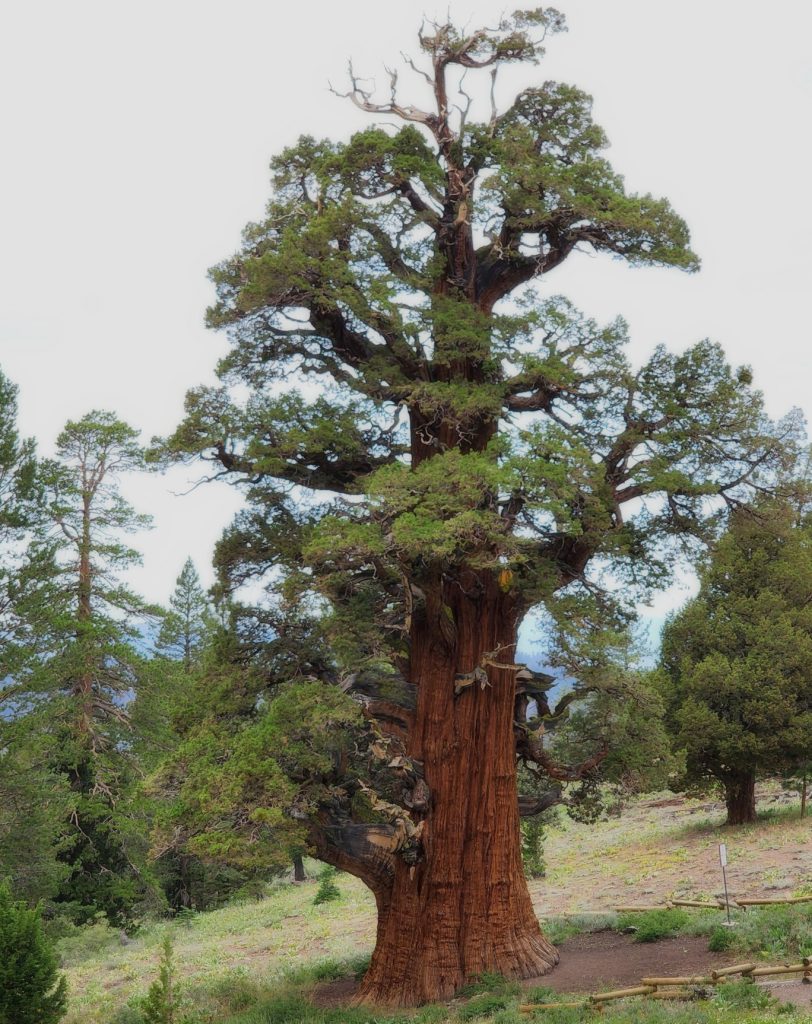
Junipers are long and slow-growing trees. The oldest and largest known juniper, named the Bennett Juniper (image above), is found in the United States in Tuolumne County, California. The exact age of this giant has been a mystery with opinions ranging from 3,000 – 6,000 years. It is 78 feet high and the is diameter (at chest height) 12.7 feet.
It is not uncommon for juniper trees to live more than 300 years, but much will depend on the species and environmental conditions. A juniper which stands only 5 ft. tall may be 50 years old. Junipers don’t often exceed 30 ft. in height or 3 feet in diameter despite their age.
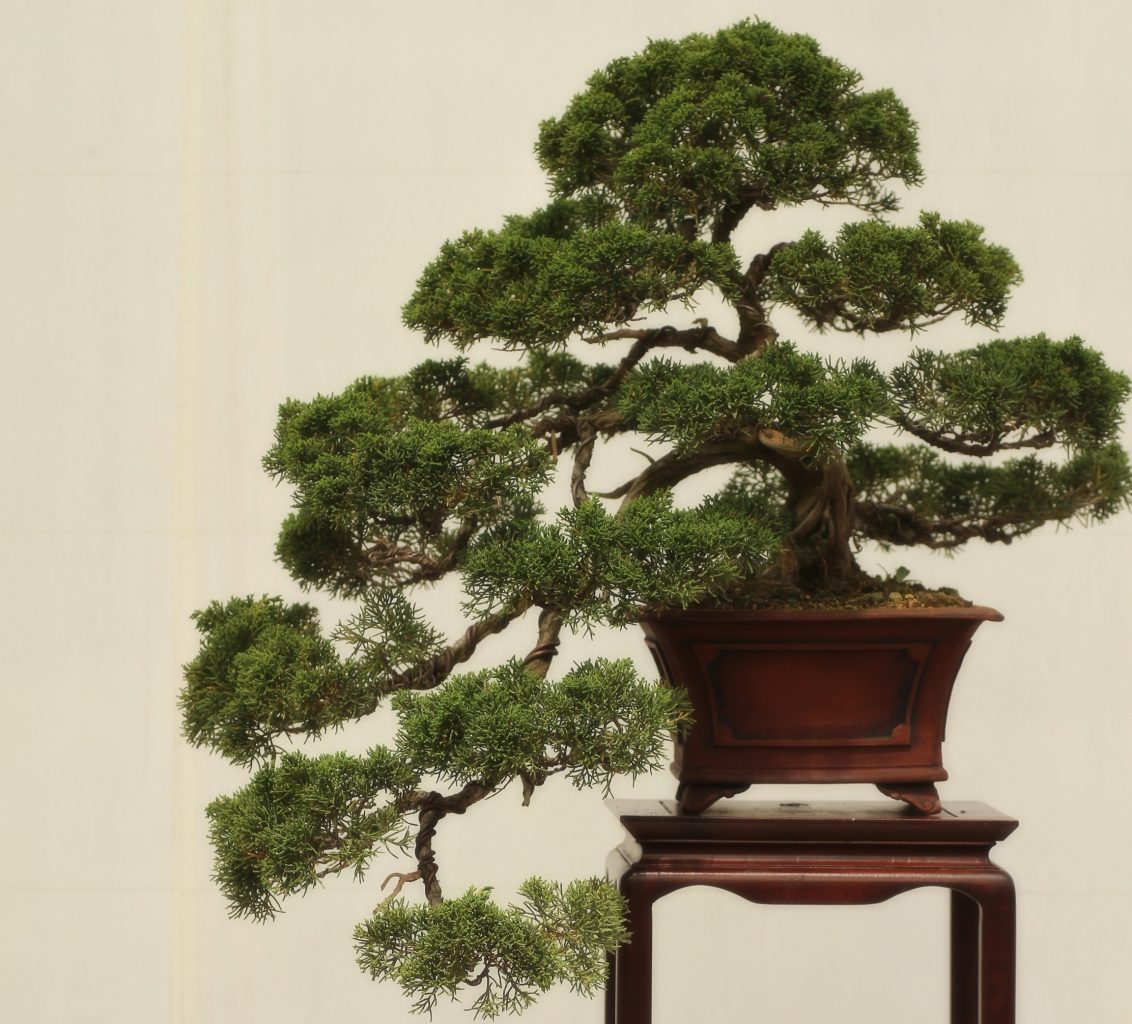
Juniper Bonsai trees create some stunning and unique shapes. In addition to their graceful beauty, these living sculptures are one of the most popular evergreen bonsai due to their hardiness and longevity. Juniper Bonsai is a symbol of protection for the home as well as a representation of the ability to overcome challenges.
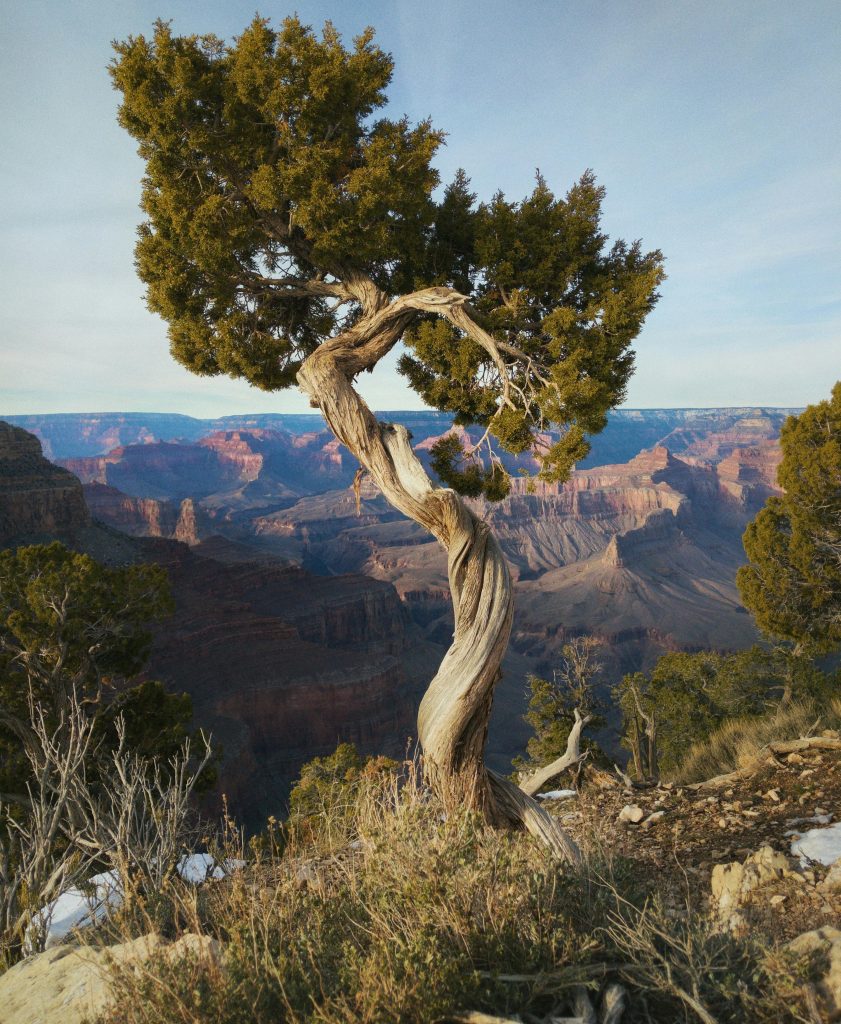
The Utah juniper (Juniperus osteosperma – image above) can grow in some of the most inhospitable landscapes you could imagine. In baking heat, fierce wind, bone-chilling cold and with little water, they can appear to grow straight out of solid rock. Even if the wind knocks them down, they continue to grow. Their secret is the massive underground root system (which can be 2/3rd of its total mass, reaching down up to 25 ft. or laterally for 100 ft. or more in a search for water).
As well as providing food for animals and birds, junipers provide shade in places that may have very little respite from the sun. Their oddly twisted trunks have a mystical quality, adding charm and color to many barren landscapes.
Junipers do not withstand or re-establish well after a fire, but are wonderful at repopulating, making them a preferred choice when damaged landscapes are replanted because of their ability to grow in thin, depleted or polluted soils. Juniper leaf litter is unusual in that it is high in calcium and this creates a soil that tends toward alkali, unlike other conifers whose leaf littler produces a more acidic soil.
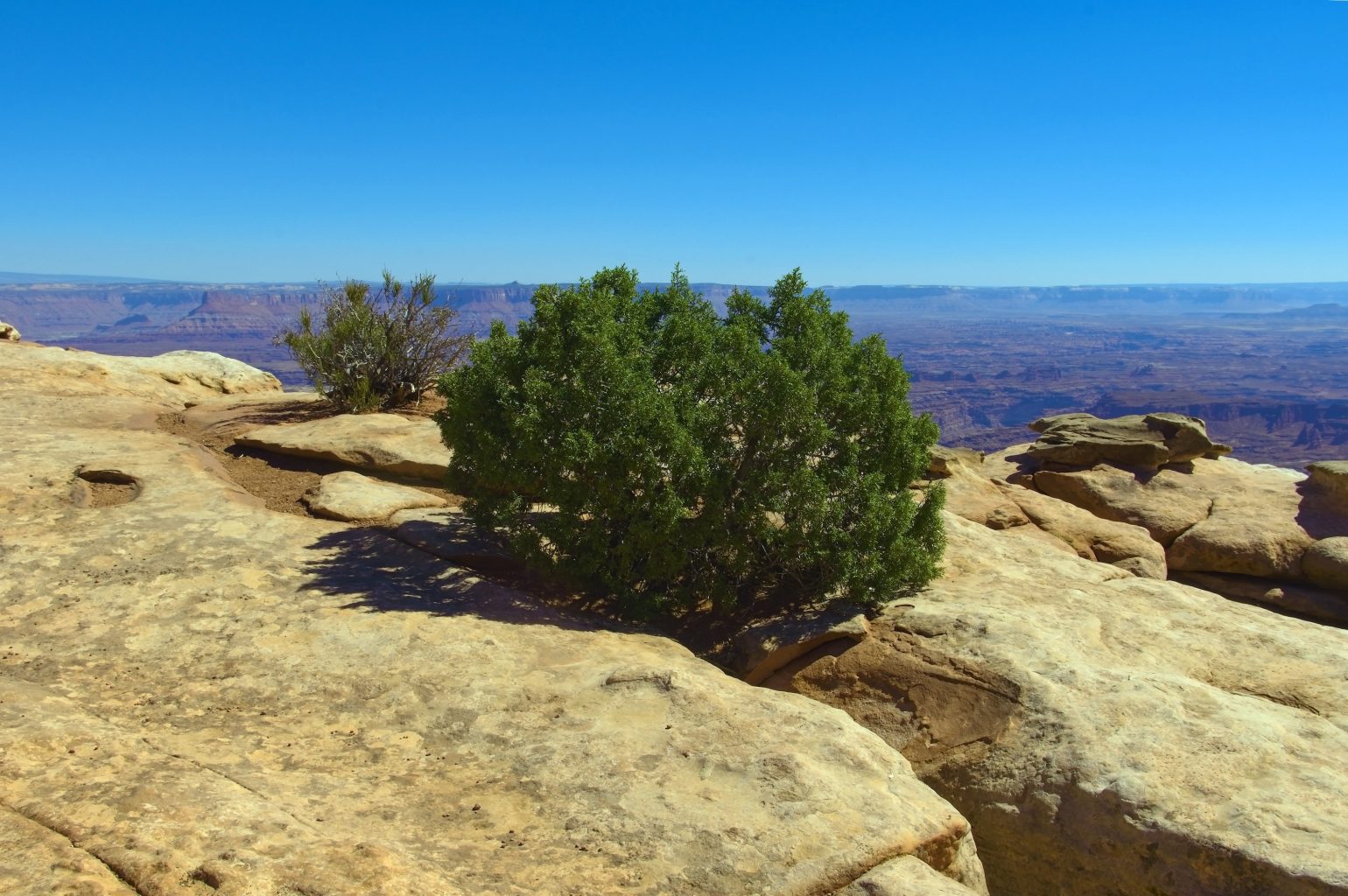
Juniper has been used medicinally in many traditions (TCM, Ayurveda, western, etc.) as a blood purifier, blood tonic, anti-inflammatory, etc. Traditionally Juniper is an autumn tonic and used as a compliment to spring tonics such as Dandelion. In the Northern Hemisphere, spring tonics prepares the body for the heat of the sun while autumn tonics assist in preparation for tolerating the cold.
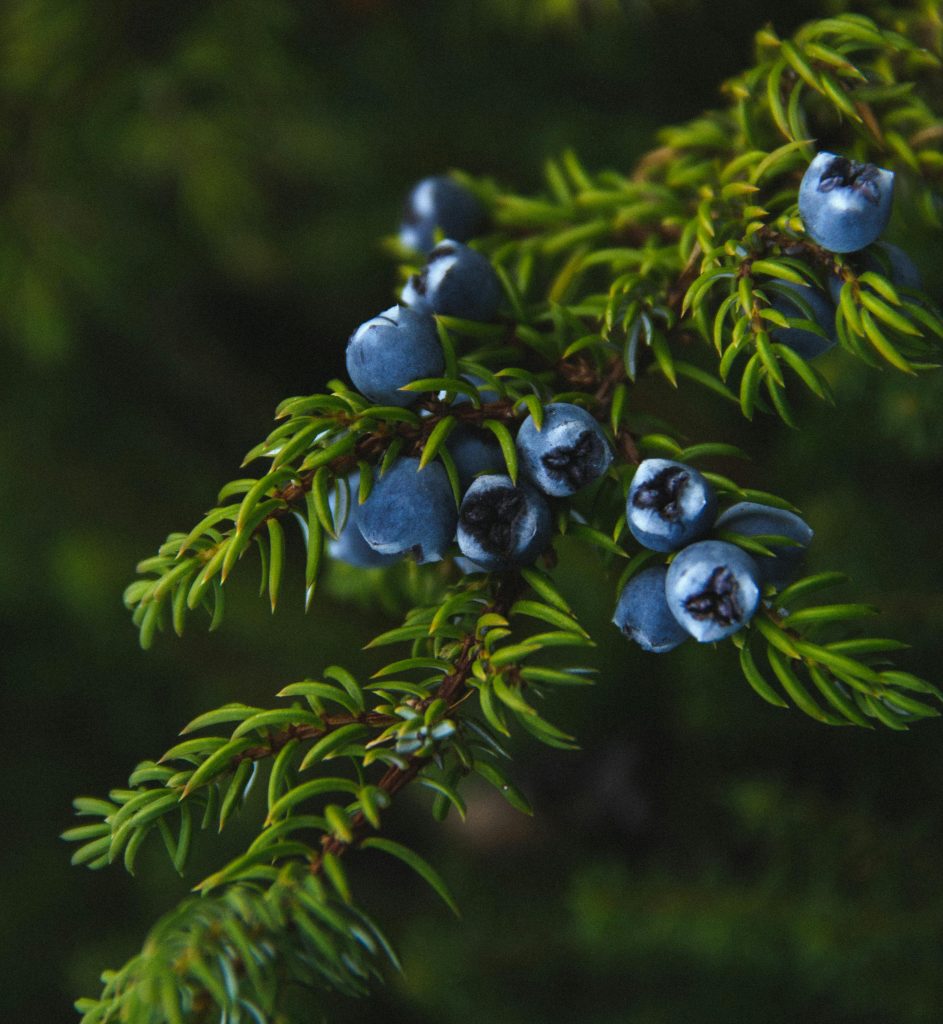
Western esoteric traditions have long tied Juniper to the planet Mars and the element fire which was said to give it the ability to drive away disease. The purifications rituals also go back to the ancient Greeks and Egyptians. In Scotland, purification rituals extended to using Juniper to fumigate their animals, barns and homes. There are many Native American legends which feature the juniper berry as an important food, protection and conferring the ability to withstand winter while bringing the return of spring.
Juniper has much to teach those who take the time. Among many other characteristics there is the passion and warmth of fire, the ability to bring nutrition as well as hope during dark times and the inspiration for regeneration after the dark times have passed.
